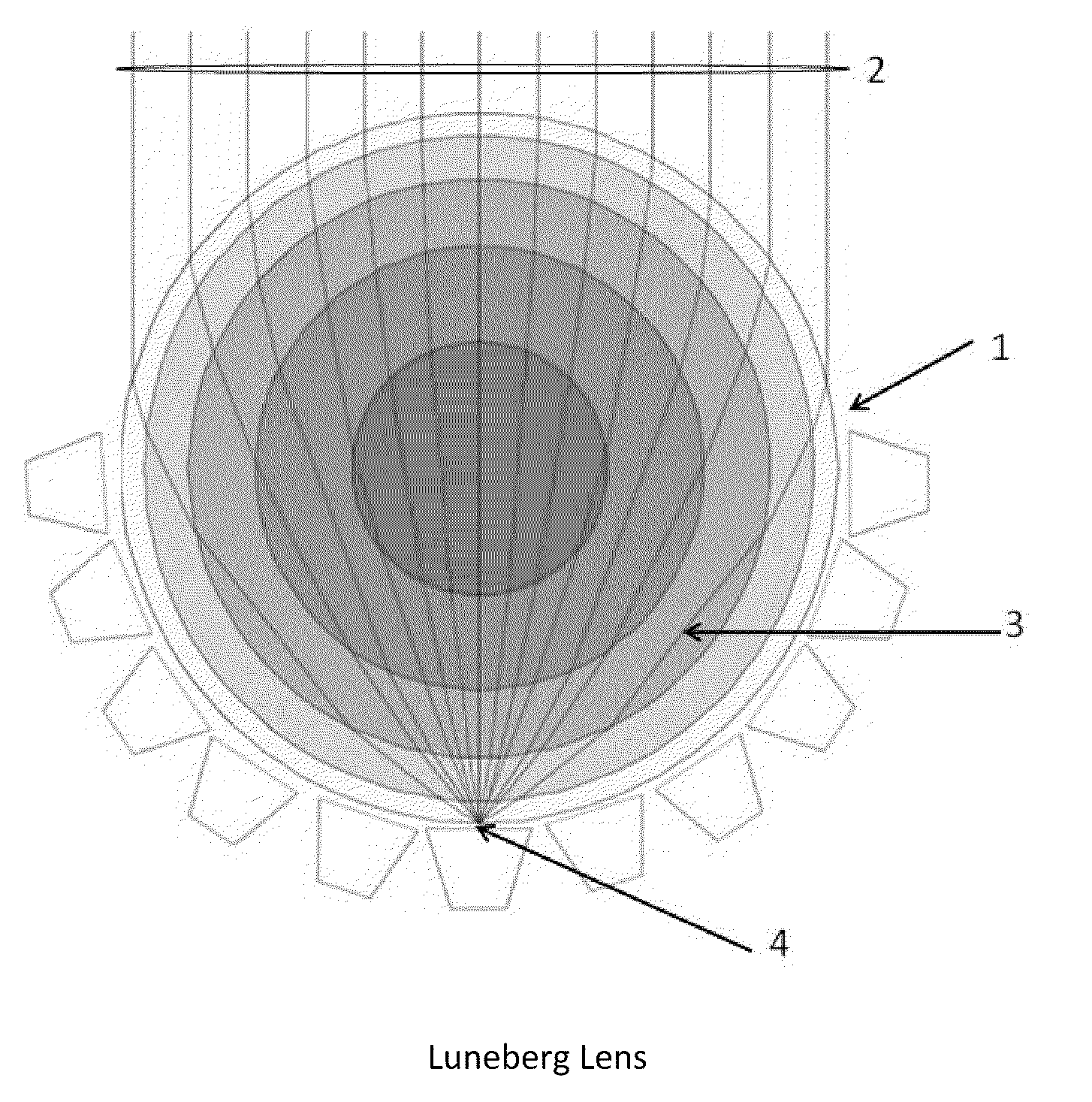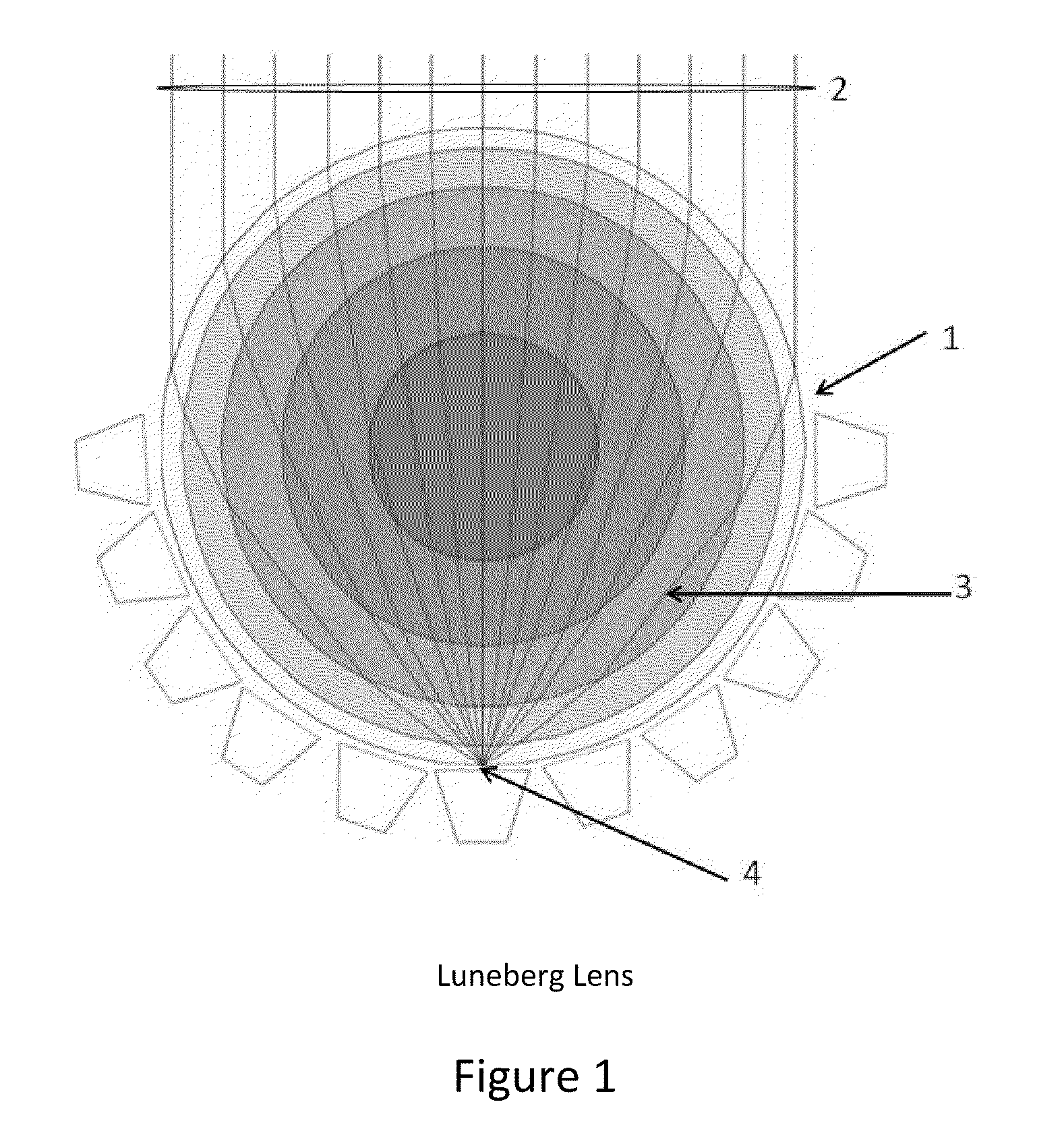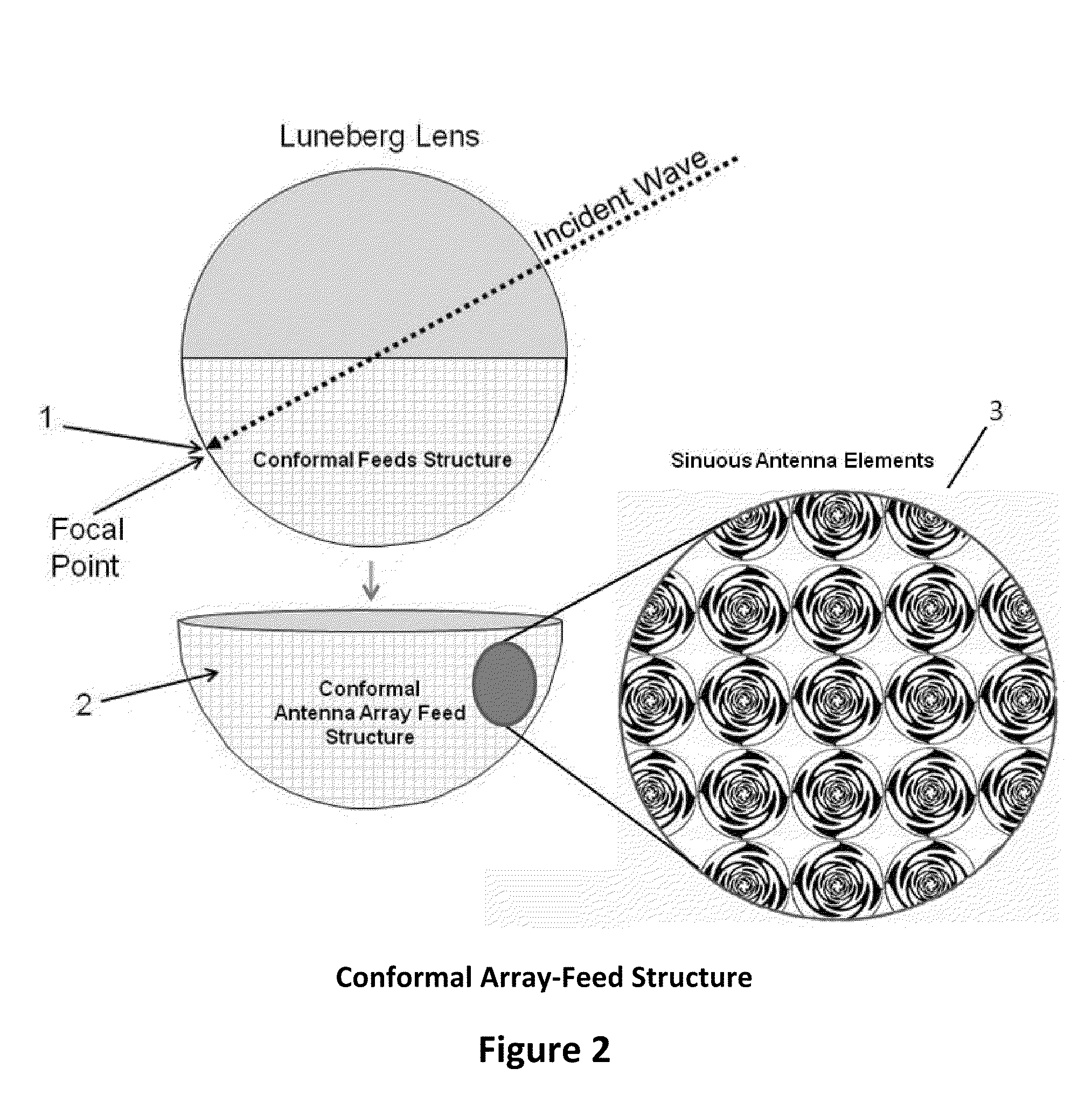Volumetric direction-finding system using a Luneberg Lens
a technology of luneberg lens and luneberg axis, which is applied in the direction of direction finders, instruments, measurement devices, etc., can solve the problem of limited real-estate of the antenna subsystem, and achieve the effect of high gain, high precision and high sensitivity
- Summary
- Abstract
- Description
- Claims
- Application Information
AI Technical Summary
Benefits of technology
Problems solved by technology
Method used
Image
Examples
Embodiment Construction
[0031]The RF spectrum of today is increasingly dense with the rapid introduction of commercial, civil and military emissions, which has placed extreme demands on military situation awareness and early-warning equipment and missions. The modern weapon and delivery systems have evolved to be silent and stealthy, and weapons are able to cruise at supersonic / hypersonic speeds. Many of these threats employ low-probability-of-intercept (LPI) technology to further evade detection. Similarly, reconnaissance and surveillance activities are hampered, lacking bandwidth, high sensitivity systems with direction finding; to address complex scan-on-scan issues. Detecting and analyzing signals of special interest is increasingly difficult.
[0032]Addressing these operation issues require system architectures which can instantaneously look in all hemispheric directions while monitoring the full frequency coverage (typically several GHz), have considerable antenna gain (on the order of 100:1 or better)...
PUM
 Login to View More
Login to View More Abstract
Description
Claims
Application Information
 Login to View More
Login to View More - R&D
- Intellectual Property
- Life Sciences
- Materials
- Tech Scout
- Unparalleled Data Quality
- Higher Quality Content
- 60% Fewer Hallucinations
Browse by: Latest US Patents, China's latest patents, Technical Efficacy Thesaurus, Application Domain, Technology Topic, Popular Technical Reports.
© 2025 PatSnap. All rights reserved.Legal|Privacy policy|Modern Slavery Act Transparency Statement|Sitemap|About US| Contact US: help@patsnap.com



